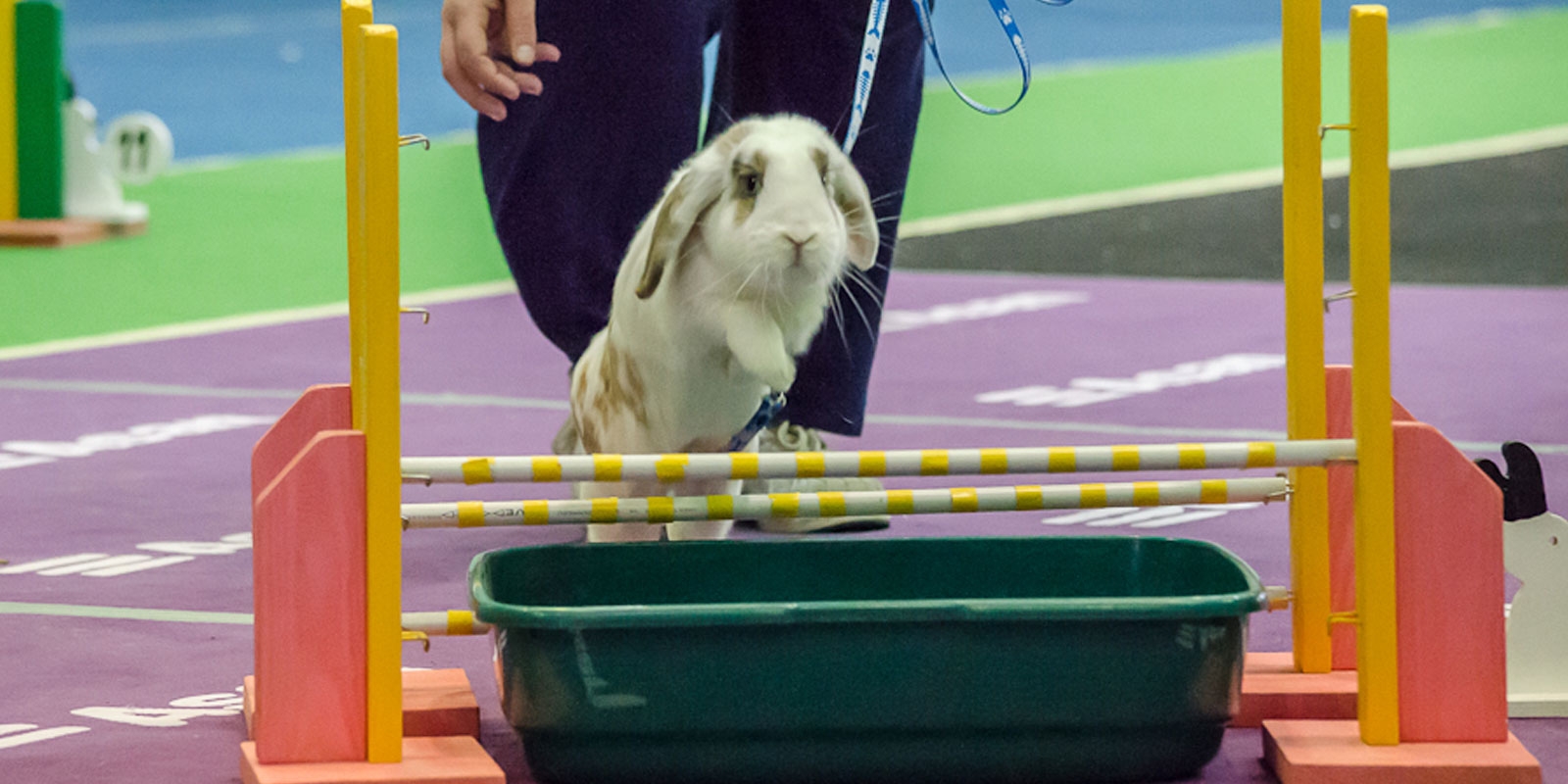How to teach a bunny to bunny hop?
Sport has been a part of human life since the beginning of civilization. For centuries, man has also involved animals. We bet on horses, go to rodeos, marvel at the speed of greyhounds at dog races. But did you know that rabbits also have their sport?
It is called the rabbit jump (known as Rabbit Show Jumping or Kaninhop in the world) and has existed as a sport since the 1970s. It originated in Scandinavia and gradually spread to Western Europe. In the 1980s, it got its own international rules, which originally were very similar to the rules of horse show jumping. Gradually, 4 basic disciplines were created as we know them today: the straight course, show jumping or crooked course, the high jump and the long jump.
Rabbit show jumping first officially appeared in our country in the new millennium. But it quickly gained popularity among Czech rabbit owners and breeders. Although the world records in practically all disciplines of rabbit show jumping have been held by Scandinavian competitors for years, nowhere is it written that Czech rabbits cannot eventually wipe them out.
Teaching a rabbit to jump is not rocket science. It just takes patience, a few right tricks and a little time. So how to do it?
Can you teach your rabbit to jump over obstacles?
It's easier than it looks. But you'll need plenty of space and a few tools you can't do without: a comfortable harness, the right leash and obstacles.
To teach your rabbit to jump, find a place where you can run freely and sufficiently with your rabbit. You can practice the turns gradually and you don't have to confuse your rabbit with them right from the start.
Start training at the earliest possible time when your rabbit is at least 3 months old. If you are training a young rabbit (kitten), don't overdo it with the load, it is not good to rush or put any pressure on kittens. This also applies to older rabbits - in proportion to their age, their mood and physical condition.
Let your rabbit get used to the harness and leash before you start. Walking together will do the trick, teaching your rabbit to follow you. Most rabbits get used to the harness without any problems, but of course there are exceptions. If your rabbit is one of them, don't stress him, adapt to him and accept that you won't make a champion out of him - he probably has some fear or reason to be wary, the cause of which you may not know.
Choose a longer leash for the harness, ideally 2-3 metres long. If you choose a longer one, you must learn the correct handling technique to prevent the leash from tangling. Next, you just need suitable obstacles. Try laying them on walks together. To start with, just loosely laid sticks, then twigs laid over pebbles... Increase the height of the obstacles gradually, only after the previous base has been safely negotiated.
For the training itself it is good to use real obstacles - removable and height-adjustable bars on pedestals or rabbit show jumping obstacles.
How to proceed with training
Start training on lower obstacles - 5 centimetres high is enough. The rabbit can handle these without any problems and then starts to jump on its own. Once the rabbit has mastered each obstacle, it is a good idea to gradually add more obstacles in succession - first low and then higher. It is also a good idea to gradually reduce the spacing between obstacles as the rabbit manages them. Also gradually increase the number of obstacles and their height. When choosing the height of the obstacle, do not forget to take into account the age and size of the rabbit. Praise the rabbit for each jump. You can also reward it with a healthy treat, but the biggest reward for the rabbit is that it can jump.
If the rabbit does not want to jump, stops before the obstacle, try to encourage it with a gentle slap on the bottom or a reward. However, the rabbit is not allowed to "jump for treats", and it is questionable whether he perceives treats as a reward - whether they are a motivation for him. A healthy little treat is more likely to give your pet energy and make you feel good.
Train regularly, be patient and motivate your champion. Your joy is transferred to the rabbit and you will feel it in every training session. However, if you feel your rabbit is reluctant to jump or tired, postpone training for another day and just take a short walk. After all, time and experiences together are important, and exercise without world-class performance will benefit you both. The best thing about rabbit show jumping is not the medals, but the fun you have with your rabbit and the joy you make for each other.








